
5 Best Tools for Amazon Sellers
Published on July 07, 2023by BotsterAre you a person or business that sells or wants to sell on Amazon? This is definitely for you!
It is without a doubt that Amazon is one of the best places to sell your product. However, your success on Amazon depends on whether you have access to the best Amazon seller tools or not.
If you’ve ever read those get-rich-quick-on-Amazon guides, you might be tempted to think there’s nothing advanced to selling on Amazon.
Heck, they probably got you thinking all you have to do is upload your products, then sit back in a recliner and watch the cash flood in while your bank keeps calling to offer you special deals!
But you see, the fact that you’re reading this right now tells me you aren't in that fantasy land, and that’s exactly why I need your full attention.
This is not a big list of software tools for Amazon sellers. Rather it’s a guide that will teach you a process.
Over the next few minutes, I want to show you 5 easy-to-use automation tools that will help you significantly as an Amazon seller.
In this step-by-step guide to top Amazon seller tools, you will learn:
- How to do competitive research
- How to do product research
- How to track product prices; and
- How to automate the whole process.
To make this Amazon seller software guide more practical, we will use air purifiers as our sample product.
And now, it’s time to unleash our brilliance!
2 Amazon sellers’ tools for monitoring competitors
The concept of competitor research is not new in the business world. In ancient times, merchants would often travel to other cities to learn about their competitors' products, prices, and marketing strategies.
To this day, the idea remains the same, and there are both paid and free Amazon seller tools that can help you.
There are certain reasons why you should monitor your Amazon competitors:
- To analyze their marketing strategies;
- To study their products and their advantages and disadvantages;
- To see what opportunities you may explore in the marketplace.
Competitor research software for Amazon sellers
Without further delay, the first tool I’ll introduce to you is the Amazon Seller Search Tool. It will find Amazon sellers of a particular product and export information about them, including:
- Position
- Seller name
- Seller URL
- Ships from
- Price
- Condition (e.g. new, used, very good, etc.)
- Condition description
- Rating
- Votes
- Free delivery dates
- Fastest delivery dates
To use the Amazon seller marketing tools described in this guide, you must first open an account on Botster. Registration is free and easy, and your credit card is not required:

- Once you’ve opened your account and verified your email address, open the Amazon Seller Search Tool page and launch it by clicking “Start Bot”:

- Name your “job”, and optionally specify (or create) a project folder (e.g. Amazon seller analytics for air purifiers):
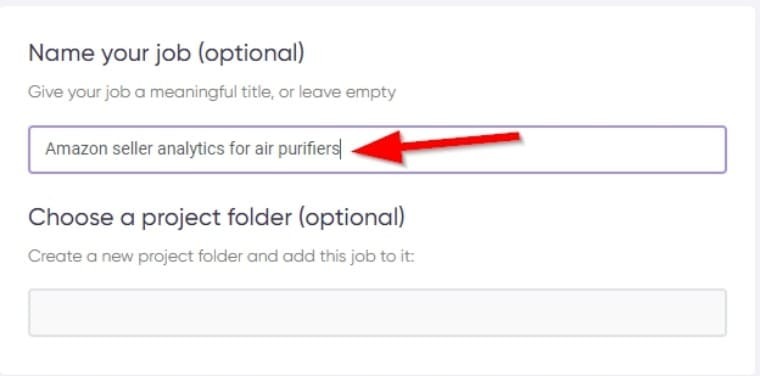
- At this point, you’ll need ASIN codes.
To manually find a product’s ASIN code, you can go to Amazon, open the product’s page, scroll down the page, and copy the product’s ASIN code under “Product Information”:

Alternatively, there’s another Amazon seller tool you can use to find many products’ ASIN codes automatically — the Amazon Search Scraper.
✅ Open the Amazon Search Scraper’s start page in another tab.
✅ Type in your keywords (e.g. Air Purifiers):
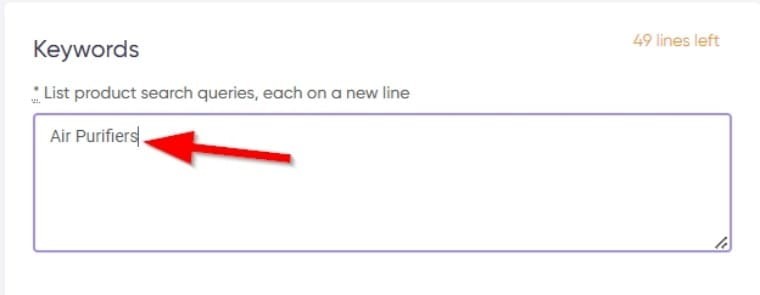
✅ Launch the bot to fetch data about the products associated with that keyword, including their ASIN codes:
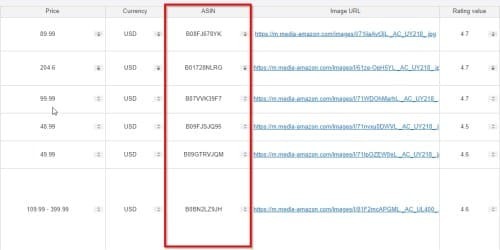
- Now, copy the ASIN codes, go back to the Amazon Seller Search Tool tab, and paste them in the ASIN box:
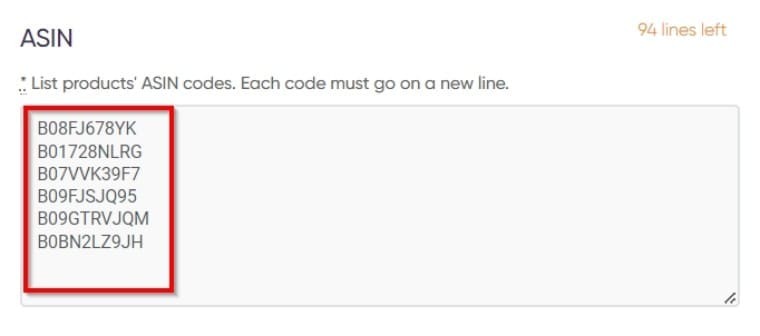
- Lastly, specify if you would like to receive a notification when the tool has fetched Amazon seller information and exported it:
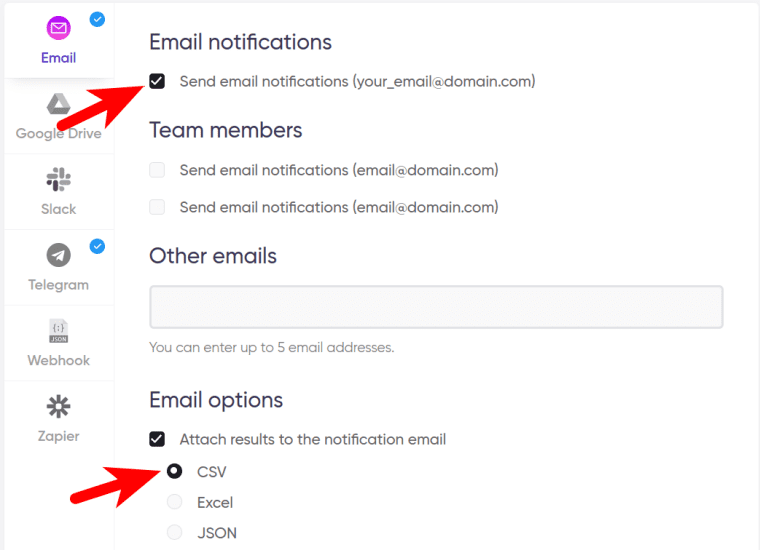
- Start the bot using the button on the right-hand side, and Voila! One of the best Amazon seller software tools is doing your bidding!
 Trust me, it doesn’t get any easier than this. Upon clicking on “Start this bot”, you will be taken to your "Jobs" section, and you can see the bot executing your command.
Trust me, it doesn’t get any easier than this. Upon clicking on “Start this bot”, you will be taken to your "Jobs" section, and you can see the bot executing your command.
Video tutorial
Watch me explain how to launch the Amazon Seller Search Tool in this quick video:
Results
Once the Amazon Seller Search Tool beeps (audio notification) that your job is ready, you can click on “View Data” to see the results:
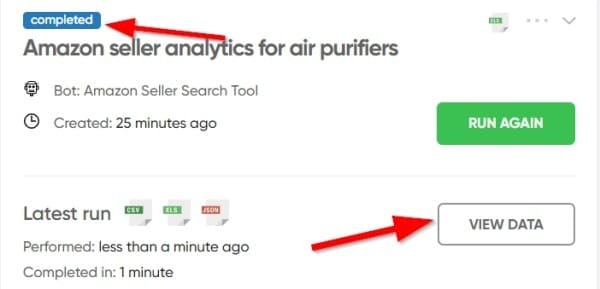 On the page that loads, you should see something like this:
On the page that loads, you should see something like this:

Tips
Here are some tips for using the data you’ve extracted:
- Compare different sellers to see their performance and sales.
- Sort the “Rating” column in descending order to see which products have the highest rating.
- Sort the “Condition” column to group products of the same condition (e.g. new, used, very good, etc.) together.
Smart tool for Amazon seller assortment analysis
To further your competitive research and even narrow things down a little more, you can research specific sellers to see their inventory.
For this specific task, I’d like to introduce another Amazon sellers software to you — the Amazon Seller Products Scraper. This software can extract every detail about the inventory of any Amazon store. The resulting info can help you see your competitors’ offerings and their prices for each product.
This is probably the best tool for Amazon sellers on the Internet today, and it will extract details like:
- Seller ID
- ASIN
- Description
- Review count
- Image URL
- Price
- Retail price
- Rating
- Prime? (yes/no)
The steps below show how to put it into action. Let’s go!
- Open the Amazon Seller Products Scraper’s start page.
- Select the number of products for the bot to scrape:
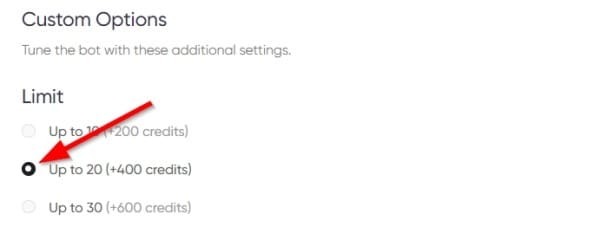
- Enter Amazon’s domain you wish to extract from.
Amazon operates in over 20 countries with different domains (e.g. com, fr, de, etc.). You can find the desired domain on this page. Select your preferred country and click on ‘Go to website’:

You’ll see the country domain in the URL after “amazon.com”:
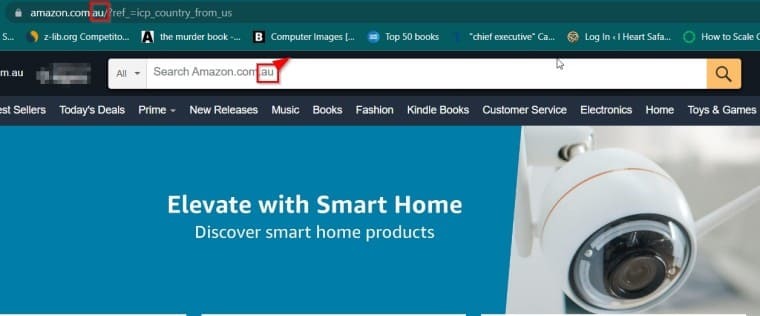
- Go back to the Amazon Seller Products Scraper's page and enter the correct domain:

- Enter the seller ID.
To find the seller ID:
✅ Go to Amazon.
✅ Open a product’s page.
✅ Click on the seller name:
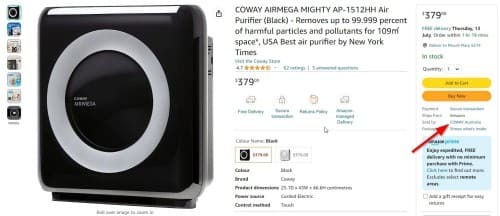
The seller’s page will open. Copy the part of the URL between the ‘=’ and ‘&’ symbols:

- Paste the seller ID into the field in the tool we’re using:

- Aaand, click on “Start This Bot”!
That's as easy as ABC, wouldn’t you agree?
Now, you just need to stand by while the Amazon seller reporting tool, the Amazon Seller Products Scraper, compiles your results.
Video tutorial
Watch a quick video guide on how to launch the Amazon Seller Products Scraper:
Results
Once the Amazon Seller Products Scraper beeps (audio notification) that your job is ready, you can click on “View Data” to see the results:

Tips
Here are some tips for using the data you’ve extracted:
- Sort the “Rating” column in descending order to see the products with the highest rating.
- Since the seller is a competitor, analyze their offering range and pricing to better inform your strategy.
- In case you’re not yet sure what products you could sell on Amazon, my guide on how to choose products to sell on Amazon can help give you clarity.
3 seller tools for Amazon product analysis
That concludes our activities on competitive research. Now let’s move to product research and analysis.
Product analysis refers to a purposeful examination and evaluation of a product to understand its features, functionality, performance, and overall effectiveness. It typically involves assessing various aspects of the product, such as its design, materials, manufacturing processes, user experience, and market viability.
Here, we are concerned about how and why a particular product is making the numbers on Amazon. So we will take a deep dive into product search, price tracking, and product reviews.
For these, I’ll be introducing 3 more examples of the best software for Amazon sellers. By the time we’re done, you would have had more clarity on the way forward.
Why is product analysis important anyways?
- It helps you understand your customers' needs, wants, and pain points, which can then be used to improve the product's usability and functionality.
- Product analysis can help you identify areas where the product can be improved.
- Product analysis can help you make informed decisions about your strategy and pricing models. By seeing what your competitors are doing, you will be able to draw a better game plan.
Product search software for Amazon seller
I promised to introduce 3 Amazon seller software tools for product analysis and research. The first one is the Amazon Search Extractor. It can help pull a list of products from Amazon based on the search keywords you provide.
Earlier, we used a tool that can fetch the sellers of a product and another that can fetch the inventory of a particular seller.
This Amazon sellers software now can fetch every product that ranks for a particular keyword and return a bunch of details about them. These include:
- Product title
- Product URL
- Price
- Currency
- ASIN
- Rating value
- Votes count
- Bestseller? (true/false)
- Amazon choice? (true/false)
- Rank in product group
- Absolute rank
Amazing, right?
To launch the Amazon Search Extractor into action:
- Open its start page and name your job.
- Enter your keyword:

- Select your preferred location and language:

- Start the bot, and you’re good to go!
You will immediately be taken to your "Jobs" section where you can see the Amazon seller tools software working to compile your data:

Video guide
If you’d rather watch me go through these steps, here’s a video guide I made earlier:
Results
In less than 2 minutes, I got 100 air purifier Amazon listings sent to my email in an Excel file. Here’s what the result looks like:

Tips
Here are some tips for using the data you’ve extracted:
- Some of the product URLs have characters that make them unusable for the next tool we’ll be using (marked in red box):
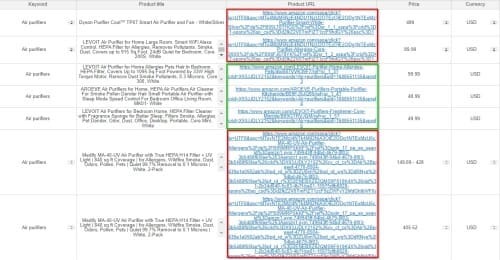
Here’s an easy lifehack on how to quickly get rid of those symbols (otherwise, they won't be accepted in the next bot in case you want to use it):
✅ Open the results in Excel.
✅ Select the “Product URL” column.
✅ Press “CTRL+H”.
✅ Enter %2F into the “Find” field.
✅ Enter / into the “Replace” field.
✅ Click on “Replace all”, and all %2F characters in this column will be replaced by / :

Perform the same easy steps to replace %3D with = .
- If you’re confused about choosing the best Amazon seller tool, you should definitely read my guide on how to choose the best Amazon product scraper.
- Use the decoded product URLs for product price tracking using the Amazon Product Price Tracker. See below.
- Use the extracted ASIN numbers for product review extraction using the Amazon Review Extractor. See below.
Price tracking Amazon software for sellers
Furthering our product analysis, the next thing to do now is to track the price of each of these products using their URLs.
And for that, we’ll be using the Amazon Product Price Tracker. This Amazon seller pricing tool will monitor product prices on Amazon and send you notifications whenever they change.
It lets you keep up with the industry price trends, and you won’t be left out when prices rise or fall. It will also notify you if a product is out of stock, available, or unavailable.
Don’t worry, setting it up will only take a few moments:
- Open the Amazon Product Price Tracker’s start page.
- Copy and paste in both the good links from the result above and those you’ve decoded:
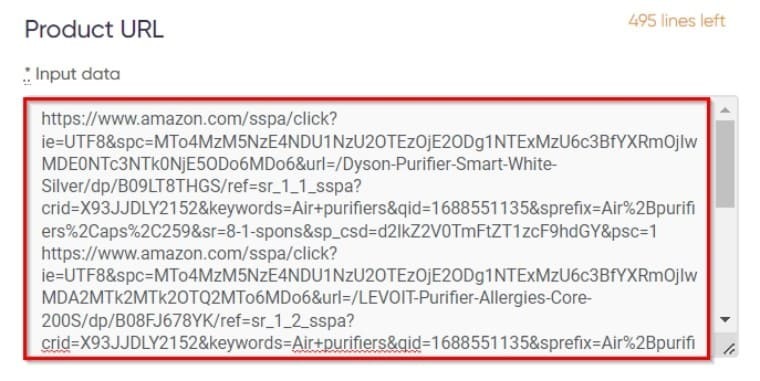
- You can leave the other settings as they are and start the bot from here, but you can also customize them as you wish.
- If you don’t want the bot to run too often, set the time and schedule:
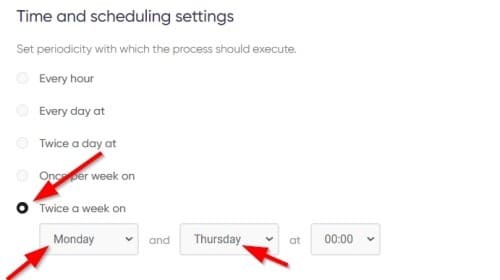
- Also, specify when you want this task to end:

- Click “Start Bot” on the right, and that’s it! A walk in the park!
Video guide
Watch me go through all these steps in this quick video:
Results
Unlike the tools we’ve used so far, this price analytics for Amazon sellers will send your results to your email address:

Tips
Here are some tips for using the data you’ve extracted:
- Use the information you get from this task to inform your pricing strategy.
- Use the price changes to predict what’s to come in the nearest future.
- If you’d like to be updated every time an out-of-stock item is available, you should definitely read my article: Amazon In Stock Alert Tool: Secret lifehacks for price drop tracking.
Review extracting software for Amazon sellers
And now to the last of the best Amazon tools for sellers I want to show you today.
I hope it’s been fun for you as much as it has been for me!
So lastly, we will be extracting reviews for each of the products we exported earlier, using their ASIN codes. For that, we’ll use the Amazon Review Extractor.
Reading these reviews will basically give you insight into what your competitors are doing wrong so you can improve in those areas.
The Amazon Review Extractor will extract:
- ASIN
- Rank group
- Rank absolute
- Verified
- Subtitle
- Helpful votes
- User name
- User avatar URL
- Reviews count
- Locations
- Title
- URL
- Review text
- Publication date
- Rating value
- Votes count
- Review image
- Review video
Now without wasting time, follow the steps below to extract your competitors’ reviews using this magnificent Amazon seller software:
- Open the Amazon Review Extractor’s start page.
- Copy the ASIN codes from the data we extracted earlier and paste them into the “ASIN list” box:
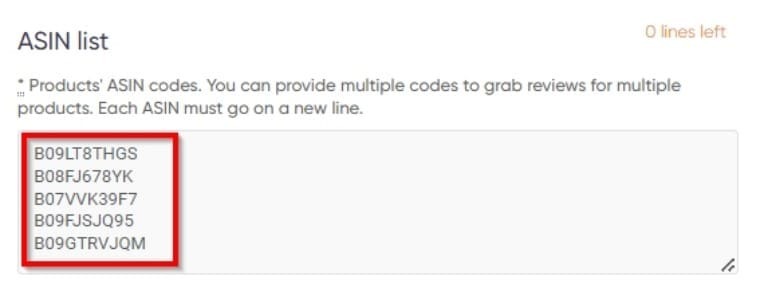
- Set how many reviews you want per product:
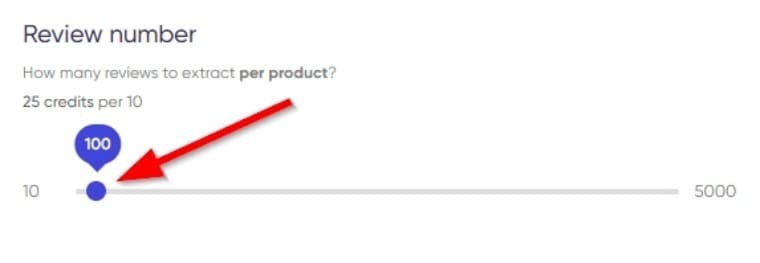
- Set the language code:

- Set the Amazon domain.
Above we used the Amazon Search Extractor to extract product ASINs from the US Amazon site, i.e. amazon.com. Make sure that you specify the same domain to export reviews by these ASINs, otherwise, no reviews will be found:

- Once you’ve done that, launch the bot and that’s it!
Easy peasy!
Video guide
Now, if you’d prefer a video walkthrough of this process, here’s one I made earlier:
Results
Once the Amazon seller software for review extraction is done fetching the data you requested, you can click on “View Data” to see the results:

Tips
Here are some tips for using the data you’ve extracted:
- Extract reviews with 1 to 3 stars separately and set them apart as a reference for negatives. These are “Critical Reviews”.
- Extract reviews with 4 to 5 stars separately and set them apart as a reference for positives. These are “Positive Reviews”.
- Find ideas for new products or for improving existing products.
How much do Amazon seller analytics tools cost?
Now that we’re done with the whole guide, I’m sure you’re wondering how much it will cost to gain access to such marvelous tools.
Honestly, we could say they are free Amazon seller tools, considering how little they cost.
Consider this:
- Exporting sellers with the help of the Amazon Seller Search Tool will cost you $0.05 per ASIN code.
- With the Amazon Seller Products Scraper, you can extract up to 30 products at once, and that costs just $0.60.
- With the Amazon Search Extractor, extracting products from a single keyword costs just $0.05 per run.
- The Amazon Product Price Tracker is rather flexible as its prices depend on your selections. For daily price checks, Email notifications, Slack notifications, and Telegram notifications, it costs about $0.01 per run, which is about $0.30 per month.
- Extracting 10 reviews with the help of the Amazon Review Extractor costs $0.025 per ASIN code, 100 reviews - $0.25, etc.
You can see now that these prices, combined with these bots’ functionalities, truly make them the Amazon analytics tools for sellers you can get your hands on.
This is an opportunity for you to leverage the speed and efficiency of bots to scale your Amazon store. So seize that opportunity, and make the best out of it!
